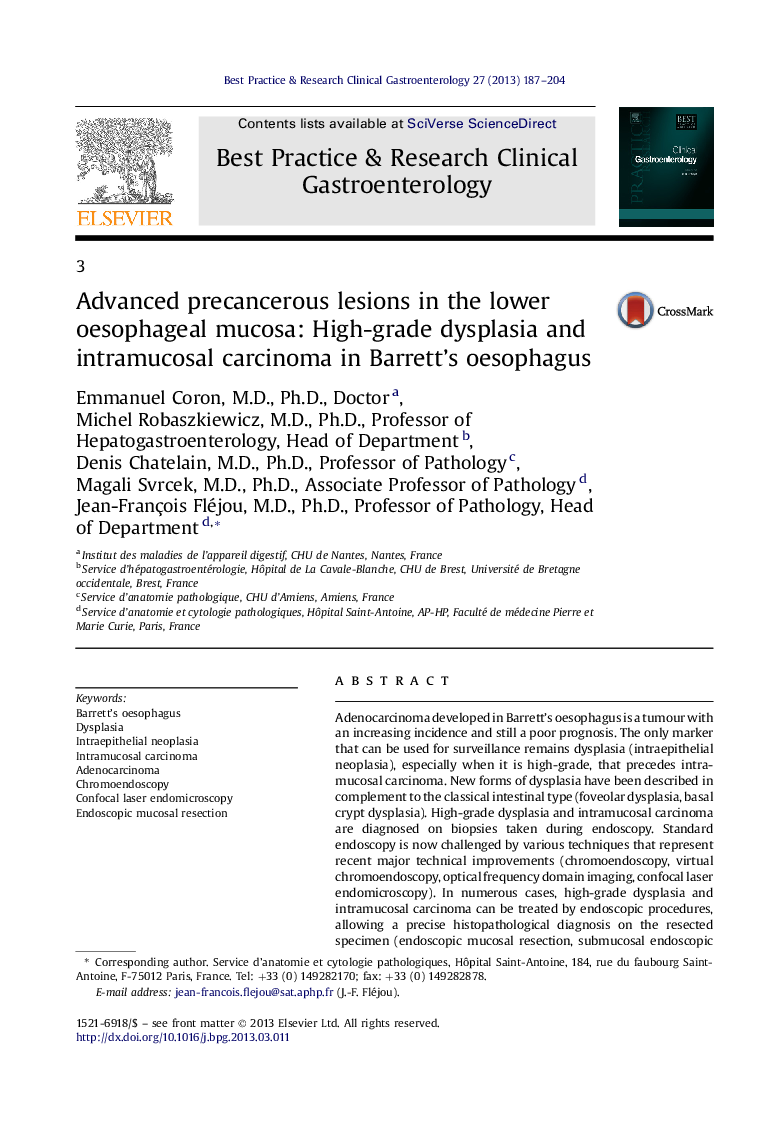| Article ID | Journal | Published Year | Pages | File Type |
|---|---|---|---|---|
| 3254339 | Best Practice & Research Clinical Gastroenterology | 2013 | 18 Pages |
Adenocarcinoma developed in Barrett's oesophagus is a tumour with an increasing incidence and still a poor prognosis. The only marker that can be used for surveillance remains dysplasia (intraepithelial neoplasia), especially when it is high-grade, that precedes intramucosal carcinoma. New forms of dysplasia have been described in complement to the classical intestinal type (foveolar dysplasia, basal crypt dysplasia). High-grade dysplasia and intramucosal carcinoma are diagnosed on biopsies taken during endoscopy. Standard endoscopy is now challenged by various techniques that represent recent major technical improvements (chromoendoscopy, virtual chromoendoscopy, optical frequency domain imaging, confocal laser endomicroscopy). In numerous cases, high-grade dysplasia and intramucosal carcinoma can be treated by endoscopic procedures, allowing a precise histopathological diagnosis on the resected specimen (endoscopic mucosal resection, submucosal endoscopic dissection) or destroying the neoplastic tissue. Radiofrequency ablation is currently considered as the best available technique for treatment of flat high grade dysplasia and for eradication of residual Barrett's mucosa after focal endoscopic mucosal resection.
